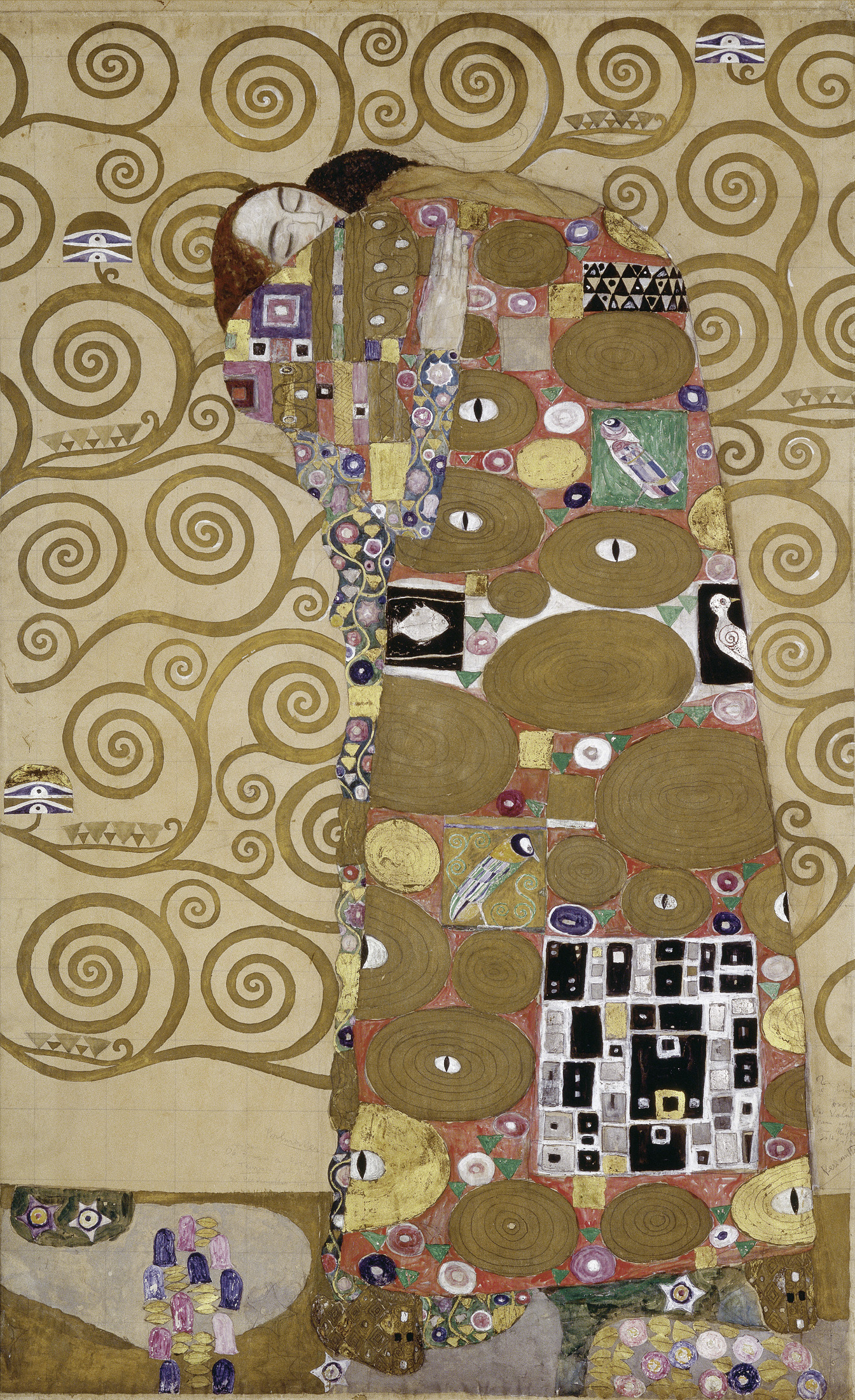Klimt and the Stoclet Palace
1904-1909“The Stoclet House is indeed very, very beautiful. The photographs give no idea and do no justice to it. The garden as well is much prettier than I expected […] And when I walk through this room – I have the strongest recollection of ‘Kammerl’ – of the wall in Kammerl, the troubles, the joys, the worries of that time, and longing for that time – and many other things.” – Gustav Klimt wrote these lines on May 16th, 1914 to his muse Emilie Flöge (1874-1952). This was a very positive review of a project that had cost him a great deal of effort for almost ten years.
In 1905, Gustav Klimt received a commission from the Brussels industrialist Adolphe Stoclet (1871-1979) and his wife Suzanne to design the walls of their palace’s dining hall. The entire house was built by Josef Hoffmann in the years 1905-1911. To this day, it is regarded as a perfect example of the idea of the “Gesamtkunstwerk” that the artists of the Vienna Workshop (founded in 1903) formulated and worked towards. Numerous artists, among them Carl Otto Czeschka, Ludwig Heinrich Jungnickel, and Richard Luksch, had a part in the artistic décor and furnishings of the Stoclet Palace. The overall cost of the construction, as well as of the extravagant décor and furnishings of the building, are a secret even today.
Gustav Klimt designed a frieze for the dining hall, which was executed in the most precious materials by the mosaic workshop of Leopold Forstner. Klimt had created the first preliminary designs as early as 1905. However, he changed his concept later on and, during his annual summer retreat of 1908 at Lake Attersee, he created, possibly with support from his long-time partner Emilie Flöge, the blueprints. It often took him a lot of effort to “pick himself up” and get to work. The “Stoclet Frieze” he designed consists of two almost identical, mirror-reversed parts on the longitudinal walls of the rectangular dining hall. The dominant motif on both sides is a tree of life, whose golden, spiral-shaped branches fill the picture plane. Blossoms, butterflies and birds add to the vibrancy of the image. The single standing figure on the left wall with the title “Expectation” corresponds to a pair of lovers in embrace on the right wall, titled “Fulfilment.” Klimt re-used this motif soon after in his famous painting “The Kiss.” The imagery on the longitudinal walls is connected by the motif of the “Golden Knight” on the end wall. The palace is still owned by the Stoclet family and became a UNESCO World Heritage Site in 2009.








